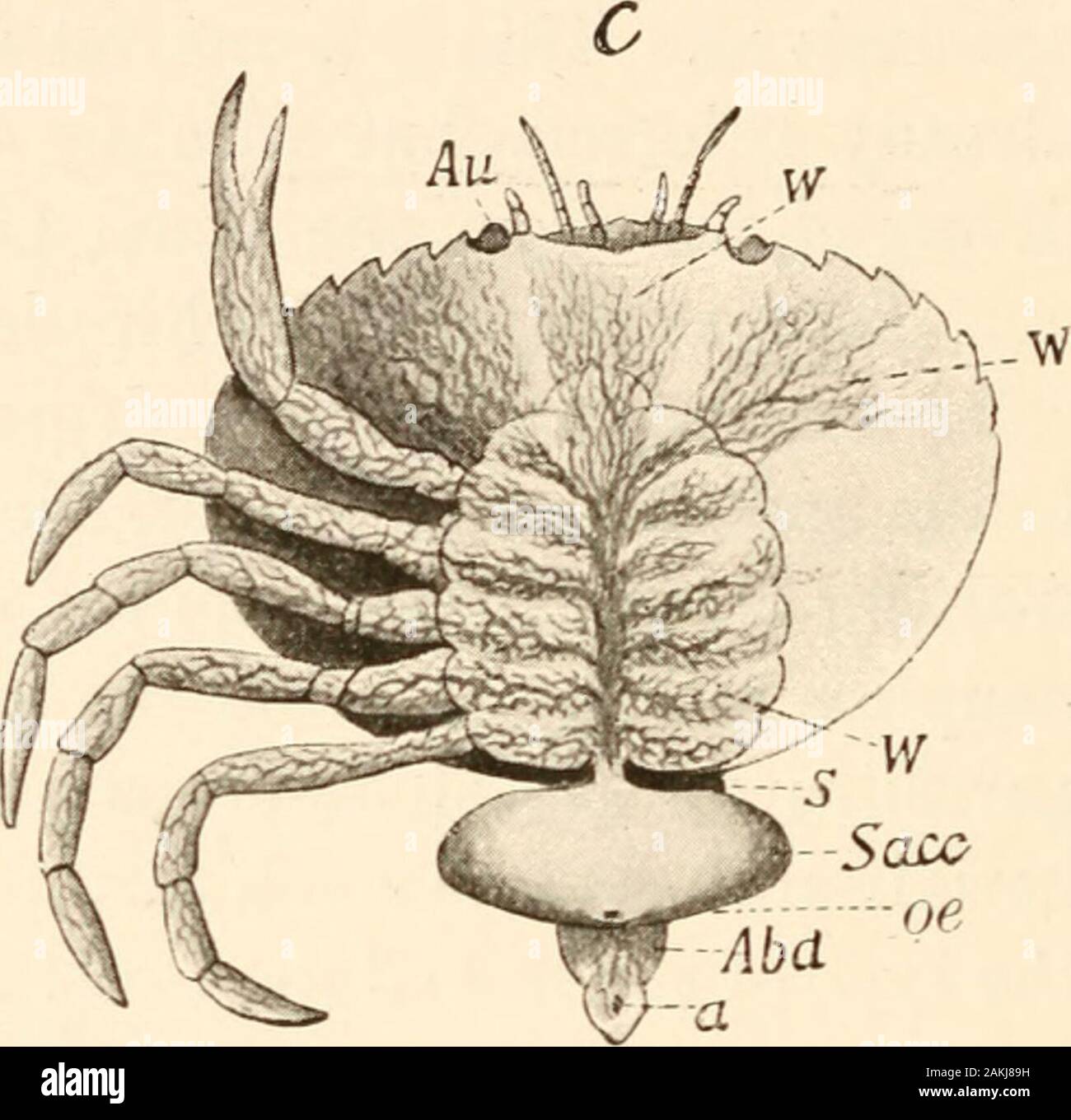The evolution theory . Abd Fig. 112. Development of the parasitic Crustacean Sacculina carcini, afterDelage. A, Nauplius stage. Au, eye. I, II, III, the three pairs of appendages.B, Cypris-stage. VI-^I, the swimming appendages. C, mature animal {Sacc),attached to its host, the shore-crab {Carcinus mcenas), with a feltwork of fineroot-processes enveloping the crabs viscera, s, stalk. Sacc, body of theparasite, oe, aperture of the brood-cavit}. Abd, abdomen of the crab withthe anus (a), into the singular creature which we now see in the sexually matureform. The same is the case with the numerous

Image details
Contributor:
The Reading Room / Alamy Stock PhotoImage ID:
2AKJ89HFile size:
7.2 MB (234 KB Compressed download)Releases:
Model - no | Property - noDo I need a release?Dimensions:
1599 x 1563 px | 27.1 x 26.5 cm | 10.7 x 10.4 inches | 150dpiMore information:
This image is a public domain image, which means either that copyright has expired in the image or the copyright holder has waived their copyright. Alamy charges you a fee for access to the high resolution copy of the image.
This image could have imperfections as it’s either historical or reportage.
The evolution theory . Abd Fig. 112. Development of the parasitic Crustacean Sacculina carcini, afterDelage. A, Nauplius stage. Au, eye. I, II, III, the three pairs of appendages.B, Cypris-stage. VI-^I, the swimming appendages. C, mature animal {Sacc), attached to its host, the shore-crab {Carcinus mcenas), with a feltwork of fineroot-processes enveloping the crabs viscera, s, stalk. Sacc, body of theparasite, oe, aperture of the brood-cavit}. Abd, abdomen of the crab withthe anus (a), into the singular creature which we now see in the sexually matureform. The same is the case with the numerous fish-parasites of theorder Copepoda. They all leave the egg as nauplius larvae, howevergreatly they may be modified later on by adaptation to a parasitichabit, and in them we can still observe, in the fully developedanimals, a whole series of grades of transformation. Thus manygenera, like Ergasilus, are distinguished from the free-swimmingCopepods only by the modification of their jaws into piercing andsucking organs